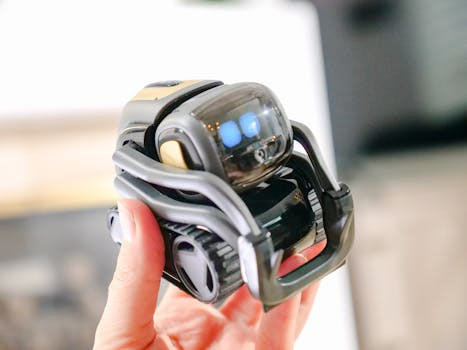Drones, Robots, and the Future of Shopping
Picture this: it’s the year 2030 and you’re in need of some groceries. Instead of making a trip to the store, you simply pull out your phone and place an order. Within minutes, a drone delivers your items directly to your doorstep. Sounds like something out of a science fiction movie, right? Well, believe it or not, this could be the future of shopping thanks to the advancements in drones and robots. In this article, we will explore the potential impact of drones, robots, and other emerging technologies on the way we shop and how it could revolutionize the retail industry.
The Rise of Drones and Robots in Retail
The use of drones and robots in retail is not a new concept. In fact, companies like Amazon and Walmart have been experimenting with the use of drones for package delivery for years now. However, recent advancements in technology have made it possible for these machines to not only deliver packages but also perform a variety of other tasks such as restocking shelves and taking inventory.
The Benefits of Drones and Robots in Retail
The introduction of drones and robots in retail has many potential benefits for both businesses and consumers. For businesses, the use of these technologies can lead to increased efficiency and cost-saving measures. Drones and robots can work faster and more accurately than humans, reducing the time and resources needed for certain tasks. They can also help businesses reach remote or hard-to-access areas, allowing for faster and more efficient delivery of goods.
On the consumer side, the use of drones and robots can provide convenience and speed. With drones, consumers can receive their orders in a matter of minutes rather than waiting days for traditional delivery methods. This can be especially beneficial in emergency situations or for essential items like medicine or food. Additionally, the use of robots in retail stores can lead to shorter checkout lines and a more seamless shopping experience.
The Future of Shopping
While the use of drones and robots in retail is still relatively new, it has the potential to completely revolutionize the way we shop. With the advancements in artificial intelligence, these machines can learn and adapt to their surroundings, making them more efficient and effective in performing various tasks.
One of the key players in this space is Amazon, which has been investing heavily in drone technology and robotics. In addition to its drone delivery program, the company has also introduced Amazon Go stores, which utilize a combination of sensors, cameras, and artificial intelligence to provide a cashier-less shopping experience. This not only eliminates the need for checkout lines but also allows for a more personalized and efficient shopping experience for customers.
Potential Challenges and Limitations
Of course, with any new technology, there are potential challenges and limitations to consider. One of the biggest concerns with the use of drones and robots in retail is the potential for job displacement. As these technologies become more advanced and widespread, there is a real possibility that they could replace human workers in certain roles. However, it’s important to note that these advancements can also create new job opportunities in fields such as maintenance, programming, and engineering.
Another challenge is the need for regulations and guidelines to ensure the responsible use of these technologies. With drones, there are concerns about safety and privacy, while with robots, there are questions about ethical considerations such as how they will interact with customers and make decisions.
In Conclusion
The future of shopping is an exciting one, with the potential for drones, robots, and other emerging technologies to transform the retail industry as we know it. While there are still challenges and limitations to consider, the benefits of increased efficiency, convenience, and personalized experiences make it clear that drones and robots have a place in the future of shopping. Whether you’re ready or not, the future is coming, and it’s time to embrace the possibilities that these advancements can bring.










